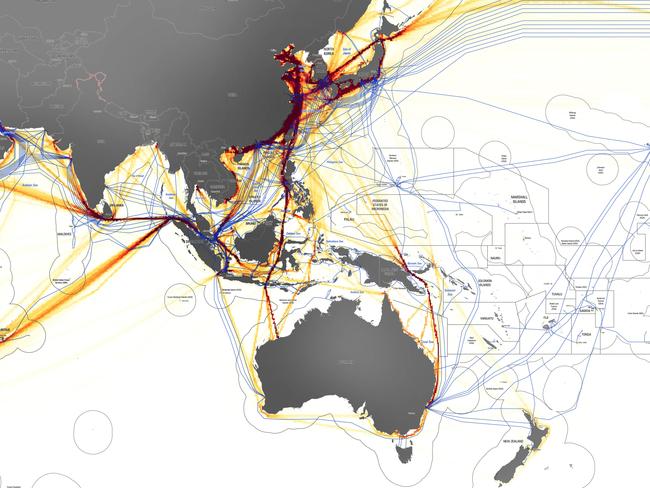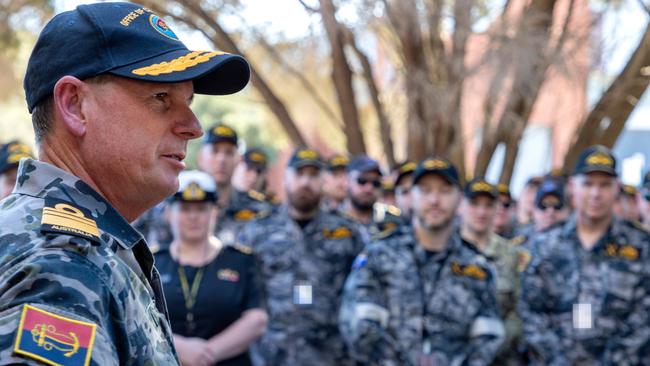Adelaide program to upgrade Australia’s reliance on fragile undersea cables
It looks like a normal map of Australia – but those coloured lines reveal a stark truth about our weakness.
SA News
Don't miss out on the headlines from SA News. Followed categories will be added to My News.
World-leading technology allowing Australia’s armed forces to secretly communicate with allies across the globe has been designed to safeguard against belligerent forces that could attack the country’s complex satellite and seabed cable networks.
A new map released by Defence reveals Australia’s reliance on undersea cables to stay connected to the world – a fragile system that Chief of Navy Mark Hammond warned could come under threat in the hotly contested Indo Pacific region.
“Our financial system is completely reliant on seabed cables (providing) connectivity with the outside world,” Vice Admiral Hammond told a recent Submarine Institute of Australia conference in Canberra.
“You can strangle this economy from the sea, and not necessarily off the coast … you can strangle it from thousands of miles away.”


Defence giant Babcock Australasia has signed an $877m contract with Defence for a massive upgrade of the country’s ageing strategic high-frequency communications system.
Babcock Australasia chief executive David Ruff said the 10-year upgrade, dubbed Project Phoenix, would ensure the technology operates with levels of reliability and resilience “not seen before within this technology domain”.
“(Defence) will have the ability to securely communicate using voice and data to almost anywhere on earth,” he said.
The long-range communications system uses a series of transmitting and receiving stations in Canberra, Riverina in NSW, Townsville in Queensland, Darwin, and Exmouth in Western Australia.
Mr Ruff said access to standard communication infrastructure, such as seabed cables and satellites, could not be guaranteed in the “modern threat environment”.

Operated from Adelaide, more than 150 workers will be assigned to the project, which Mr Ruff said established Babcock as the “largest provider of strategic high-frequency communications in the world”.
At the SIA conference, Vice Admiral Hammond said acquiring a fleet of nuclear-powered submarines would be vital to protect Australia’s trade routes and seabed cables.
Nuclear-powered submarines can stay under water indefinitely, required to resurface only to replenish food and other supplies.
“The reality is, the undersea domain remains one of the most complex and challenging scientific environments on the planet and I have complete confidence that the strategic relevance of (nuclear) submarines and their relative advantage against competing technologies will be sustained for decades,” Vice Admiral Hammond said at the conference.
gabriel.polychronis@news.com.au





